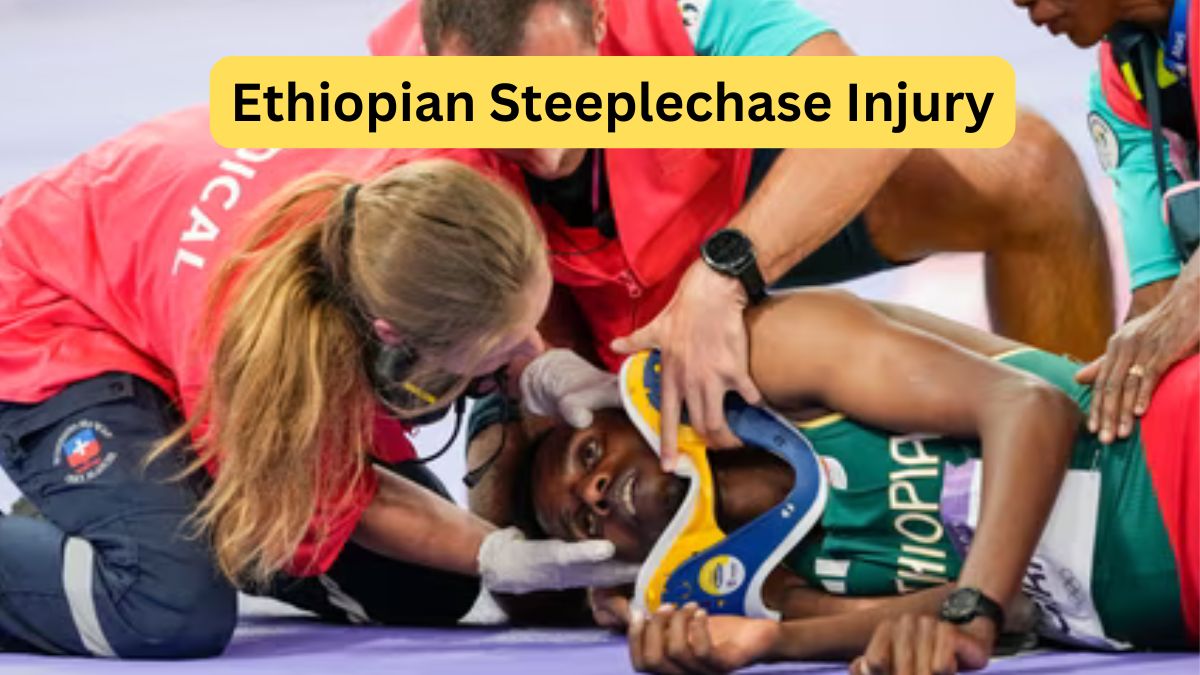The steeplechase is one of the most demanding events in track and field, requiring a unique combination of speed, endurance, and agility. It involves hurdling barriers and navigating water jumps over a 3,000-meter course. This race, with its origins in horse racing, has a storied history and holds a significant place in athletics. Ethiopia, known for its rich tradition in distance running, has produced many world-class steeplechasers. However, like any high-intensity sport, it comes with its risks, and injuries are a common concern.
The Nature of Steeplechase
The steeplechase is unlike any other track event. Athletes must leap over barriers and water pits, maintaining a fast pace throughout. This unique combination of obstacles requires specialized training and exceptional physical conditioning. Ethiopian steeplechasers have consistently excelled in this event, showcasing their endurance and agility on the world stage.
Common Injuries in Steeplechase
Injuries in steeplechase can be categorized into acute and overuse injuries. Acute injuries occur suddenly, often due to a fall or collision, while overuse injuries develop gradually from repetitive strain.
1. Sprains and Strains: Sprains, particularly of the ankle, are common in steeplechase due to the uneven landing surfaces of barriers and water jumps. Strains, affecting muscles and tendons, often occur in the lower legs and thighs due to the intense running and jumping.
2. Stress Fractures: The repetitive pounding of running combined with the impact of jumping can lead to stress fractures, particularly in the tibia (shinbone) and metatarsals (foot bones). These injuries are often caused by overtraining and insufficient recovery.
3. Knee Injuries: The constant hurdling and landing place significant stress on the knees, leading to injuries such as patellar tendinitis (jumper’s knee) and iliotibial band syndrome. These injuries are exacerbated by improper technique and inadequate strength in supporting muscles.
4. Achilles Tendinitis: The Achilles tendon, which connects the calf muscles to the heel bone, is crucial for running and jumping. Overuse can lead to tendinitis, causing pain and inflammation. This injury is common among steeplechasers due to the constant strain on the tendon.
Case Studies: Ethiopian Steeplechasers
Ethiopian steeplechasers have faced their share of injuries, impacting their training and competition schedules. Here, we look at some notable cases:
1. Sofiya Assefa: Sofiya Assefa, one of Ethiopia’s top female steeplechasers, has had a successful career but not without setbacks. In 2015, she suffered a stress fracture in her tibia, which forced her to withdraw from several competitions. Her recovery involved a combination of rest, physical therapy, and a gradual return to training.
2. Getnet Wale: Getnet Wale, another prominent Ethiopian steeplechaser, experienced an Achilles tendinitis injury in 2019. This injury required him to take a break from competition and undergo extensive rehabilitation, including strengthening exercises and physiotherapy.
Prevention and Rehabilitation
Preventing injuries in steeplechase requires a multifaceted approach, focusing on strength training, proper technique, and adequate recovery. Here are some strategies:
1. Strength Training: Building strength in the muscles surrounding the ankles, knees, and hips is crucial. Exercises such as squats, lunges, and calf raises help in developing the necessary muscle support for hurdling and jumping.
2. Technique Improvement: Proper technique is essential in reducing the risk of injury. Coaches work with athletes to ensure they are using the correct form when hurdling and landing. Drills that simulate race conditions can help athletes improve their technique and build confidence.
3. Flexibility and Mobility: Maintaining flexibility in the lower body muscles, particularly the calves and hamstrings, can prevent strains and sprains. Regular stretching and mobility exercises are integral parts of a steeplechaser’s training regimen.
4. Recovery: Adequate recovery time is vital to prevent overuse injuries. Athletes should incorporate rest days into their training schedules and use techniques such as ice baths, massage, and foam rolling to aid recovery.
5. Footwear: Wearing appropriate footwear that provides support and cushioning can reduce the impact on the feet and lower legs. Regularly replacing worn-out shoes is also important to maintain the necessary support.
The Road to Recovery
For Ethiopian steeplechasers, recovering from injury involves a combination of medical treatment, physical therapy, and gradual return to training. Here are the typical steps:
1. Medical Treatment: Injuries such as stress fractures or severe tendinitis may require medical intervention. This could include imaging tests (like X-rays or MRIs) to diagnose the extent of the injury and treatments such as anti-inflammatory medications or, in severe cases, surgery.
2. Physical Therapy: Physical therapists work with injured athletes to restore strength and mobility. This includes exercises to rebuild muscle strength, improve flexibility, and correct any biomechanical issues that may have contributed to the injury.
3. Gradual Return to Training: Returning to full training after an injury must be done gradually to avoid re-injury. Athletes may start with low-impact activities such as swimming or cycling before progressing to running and hurdling.
The Psychological Impact
Injuries can have a significant psychological impact on athletes. The frustration of being sidelined, fear of re-injury, and pressure to return to competition can take a toll on mental health. Support from coaches, teammates, and sports psychologists can help athletes navigate these challenges and maintain a positive outlook.
Conclusion
The steeplechase is a demanding event that tests an athlete’s physical and mental limits. Ethiopian steeplechasers, known for their resilience and determination, have faced various injuries throughout their careers. Understanding the common injuries, prevention strategies, and recovery processes is crucial for athletes and coaches. With proper training, technique, and support, Ethiopian steeplechasers can continue to excel in this challenging and exhilarating event.
